How To Grow Sweet Potatoes: Ultimate Care & Growing Guide
Grow delicious sweet potatoes in your garden this year!

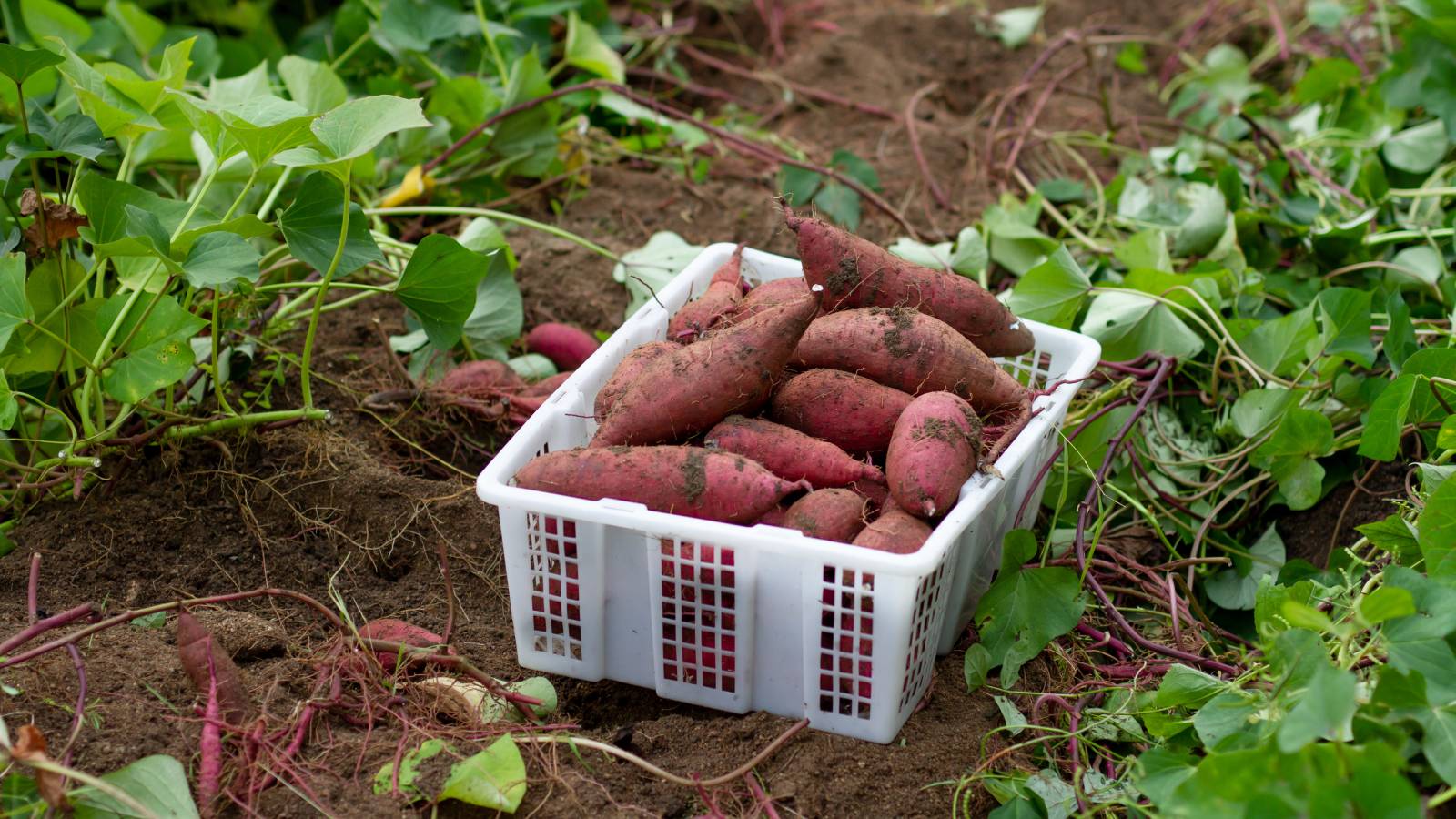
Quick Facts
Botanical name: Ipomoea batatas
Height: 2 feet ( .61 m.)
Spread: Up to 20 feet ( 6.1 m.)
Sun exposure: Full
Soil requirements: Well draining
Hardiness zones: USDA 9-11
When to plant: Spring
In the United States, sweet potatoes are a common part of soul food and southern cooking. The tubers are also popular in the Pacific islands, South India, and many African countries. Baked or boiled, stewed, or fried, the sweet potato is a delicious component of many meals. The sweet potato plant is a perennial in tropical to subtropical regions. In North America and other countries, it is often treated as an annual due to its lack of cold hardiness. Slips are required for growing sweet potatoes. Slips are sprouts from the root. Read further for tips on how to grow sweet potatoes right in your garden.
Sweet Potato Plant Care
Sweet potatoes are fun and pretty to grow. Let's dig in!
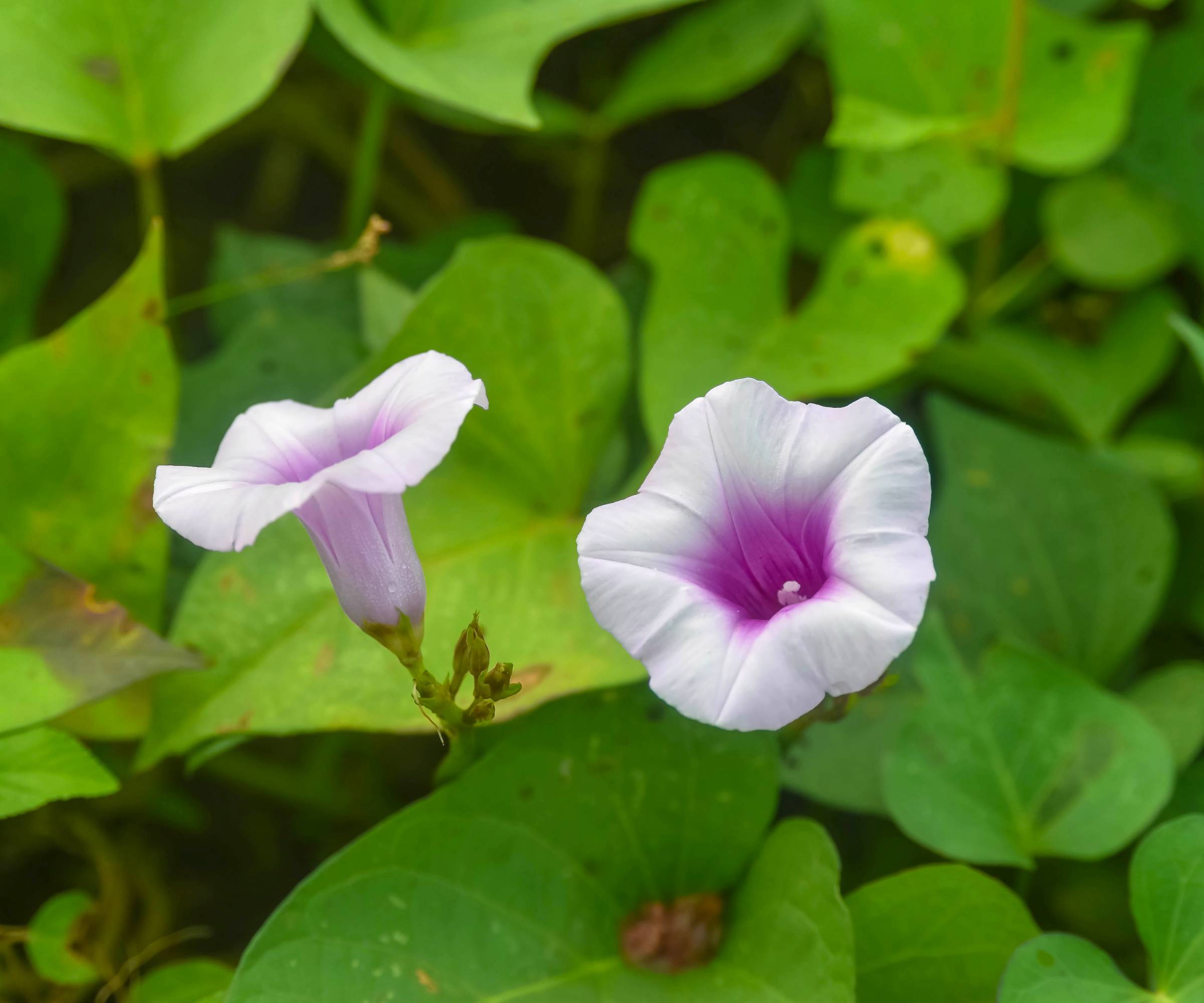
Light
As a warm region plant, sweet potato plants need plenty of sunshine. The optimum is at least 8 hours of bright light per day. Because the plants are vines, they should be placed where taller crops don’t shade them during the day.
Water
These tubers are drought tolerant once established. That being said, the best growth will occur with even soil moisture. Water the slips well at transplant. Once the plant is established, give it 1 inch ( 2.54 cm.) of water per week. In sandy soils, the plants will need to be watered more frequently to maintain some moisture.
Temperature & Humidity
To sprout your own slips, plant smaller tubers in soil in a box and cover it with black plastic. Keep the box where temperatures are at least 75 degrees Fahrenheit ( 24 C.). When planting slips, the soil should be between 60-85 F ( 15.56-27 C.). Sweet potatoes tend to grow best where there is plenty of humidity and do not like dry air. Ideal humidity is between 40-50 percent.
Soil
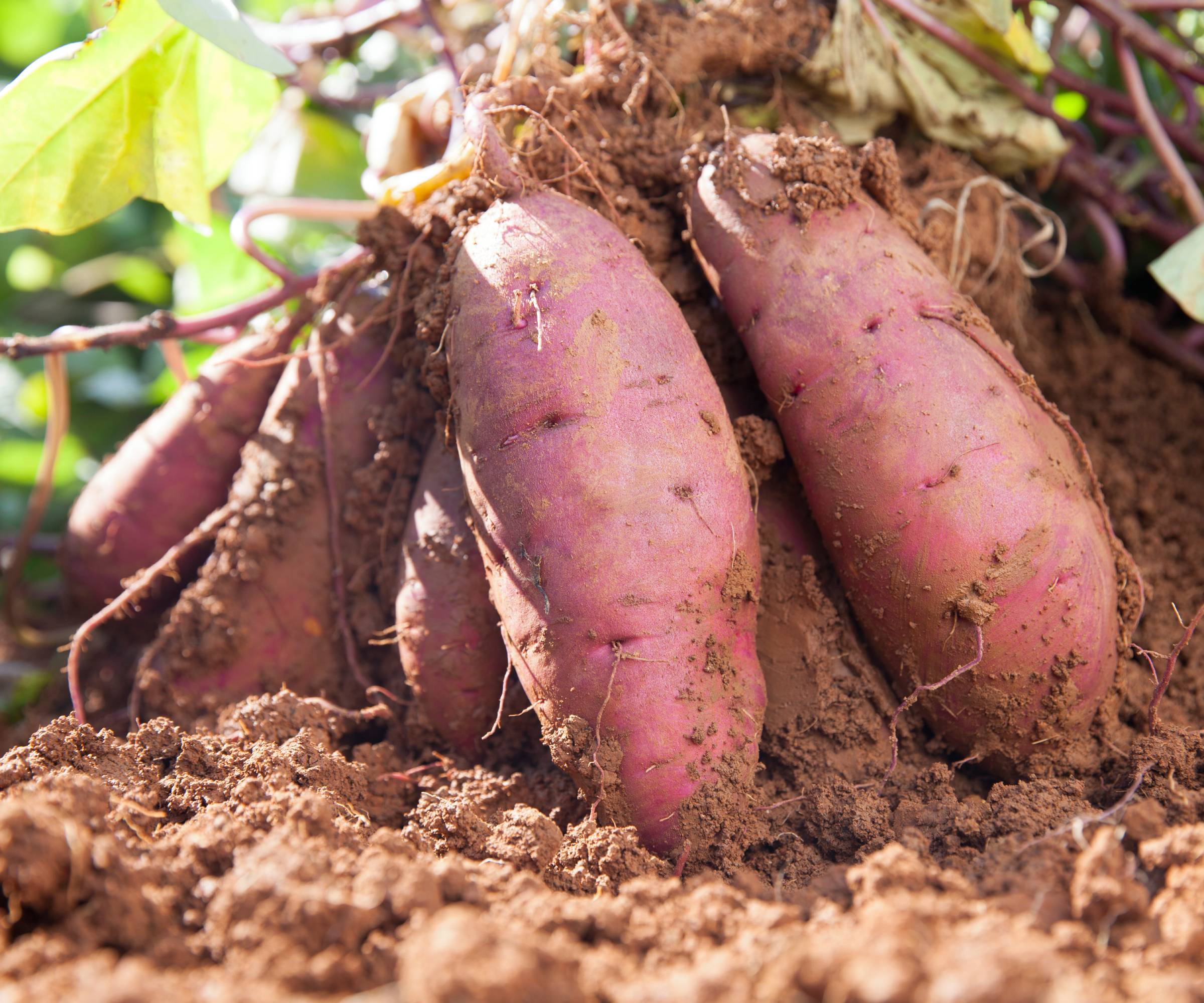
Well-drained, sandy loam, or silt loam is the best soil for planting sweet potatoes. Heavy soil will produce small, malformed tubers. In soils with poor drainage, the potatoes will crack, have rough skin, and be misshapen.
Fertilizer
Prior to planting, incorporate a 5-10-10 directly into the soil. Side dress the plants with a nitrogen food such as 21-0-0 in early July.
Sign up for the Gardening Know How newsletter today and receive a free copy of our e-book "How to Grow Delicious Tomatoes".
Problems, Pests & Diseases
Heavy soils and overwatering can cause the roots to become malformed, develop mold spots, or develop bacterial soft rot. The primary pests are weevils, cutworms, beetles, and root knot nematodes. Deer will graze on sweet potato vines. Leaf spots are common. Avoid overhead watering.
How to Plant Sweet Potatoes
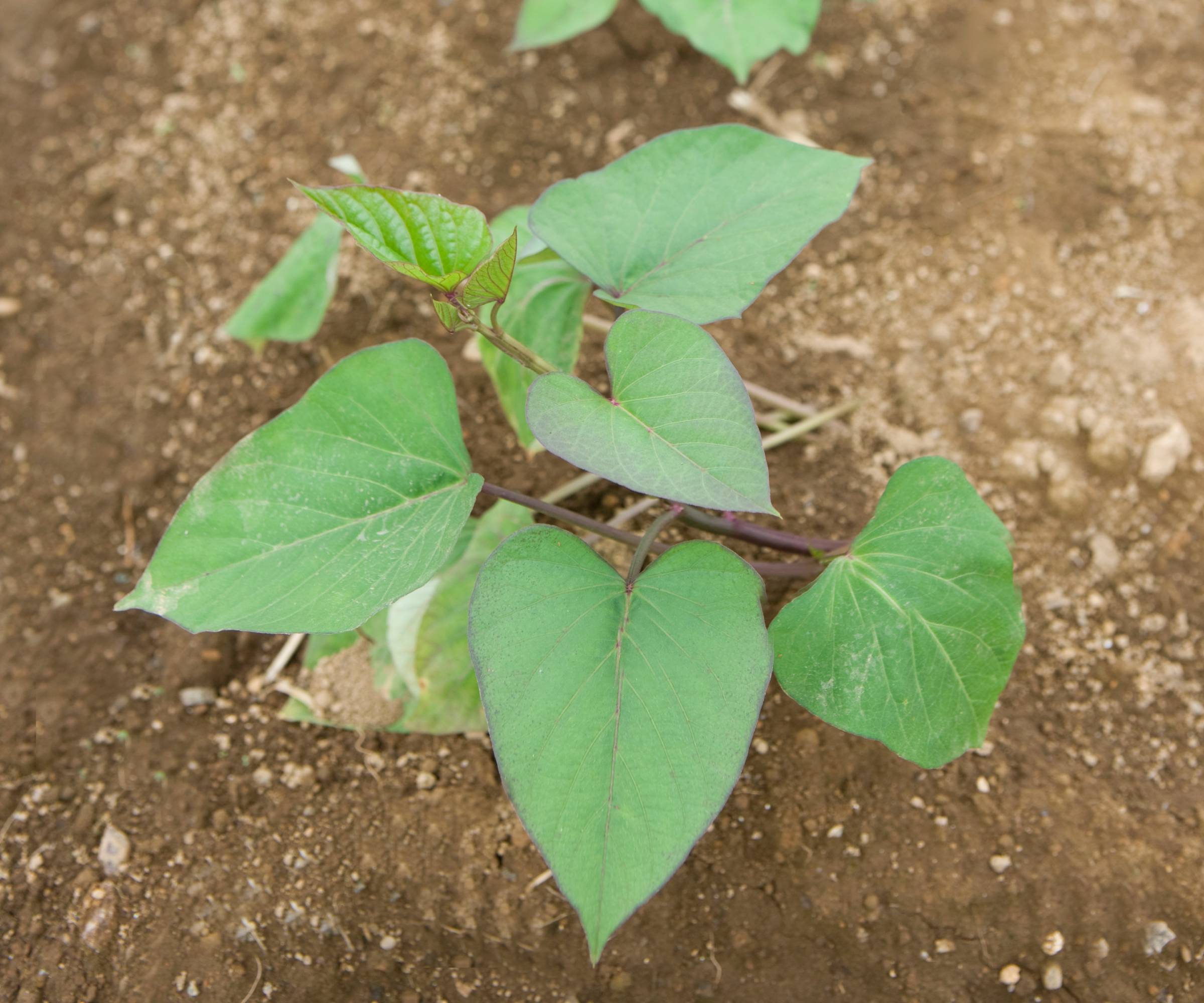
Sweet potatoes are grown in peaked rows 12 inches ( 30.48 cm.) wide and 10 inches ( 25.4 cm.) tall and 3 feet ( .91 m.) apart. Plant the slips when the soil has warmed and there is no danger of frost. Set the cut end down 5 inches ( 12.7 cm.) deep and space them 15 inches ( 38 cm.) apart. Water the slips well after installation. Short on space? Try a vertical sweet potato garden.
How & When to Harvest Sweet Potatoes
Sweet potatoes need 90-120 days from installation to harvest. Harvest sweet potatoes before a killing frost and when the leaves are beginning to yellow. Find the crown and dig the tubers out by hand to avoid damaging them. The roots are in the top 10 inches ( 25.4 cm.) of the soil. Store sweet potatoes only after they have air dried.
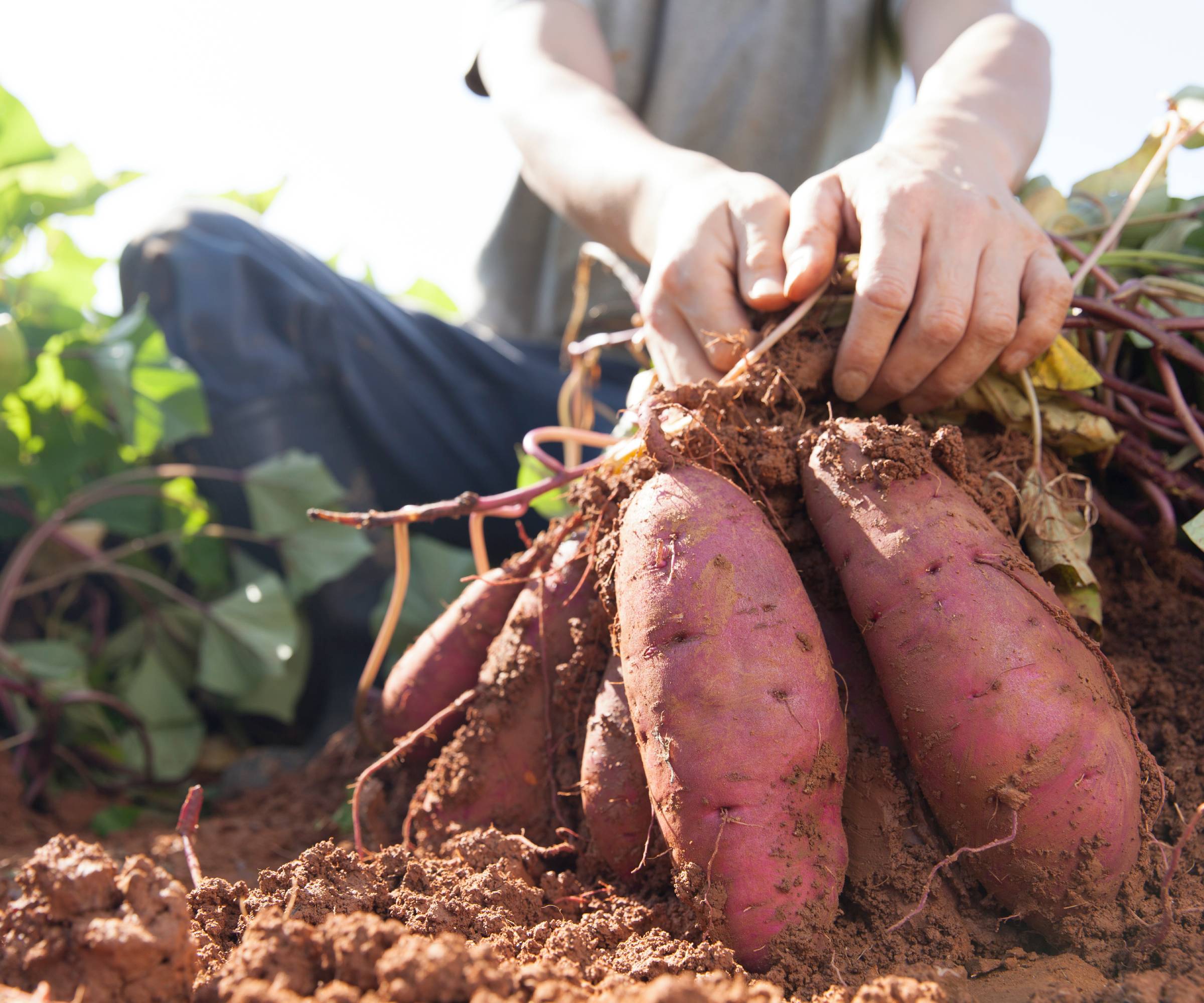
Propagation
Slips are how to plant sweet potatoes. If you only want a couple of plants you can suspend a tuber in water until the side roots form. If you want many plants, place small potatoes in a container covered with a couple of inches ( 5 cm. ) of moderately moist soil. Add more soil to cover shoots as they appear. Keep the container where soil can maintain at least 70 degrees F. ( 21 C.). Slips are ready to plant in about 6 weeks or when they are 6-8 inches ( 15-20 cm.) long.
Varieties
There are many varieties of sweet potato, some of which have resistance to certain diseases or pests.
- Evangeline: resists root knot nematode, Fusarium, Rhizopus, and root rot.
- Jewel: resists root knot nematode and Fusarium.
- Bonita: resists root knot nematode and Fusarium.
- Centennial: resists wireworm and Fusarium.
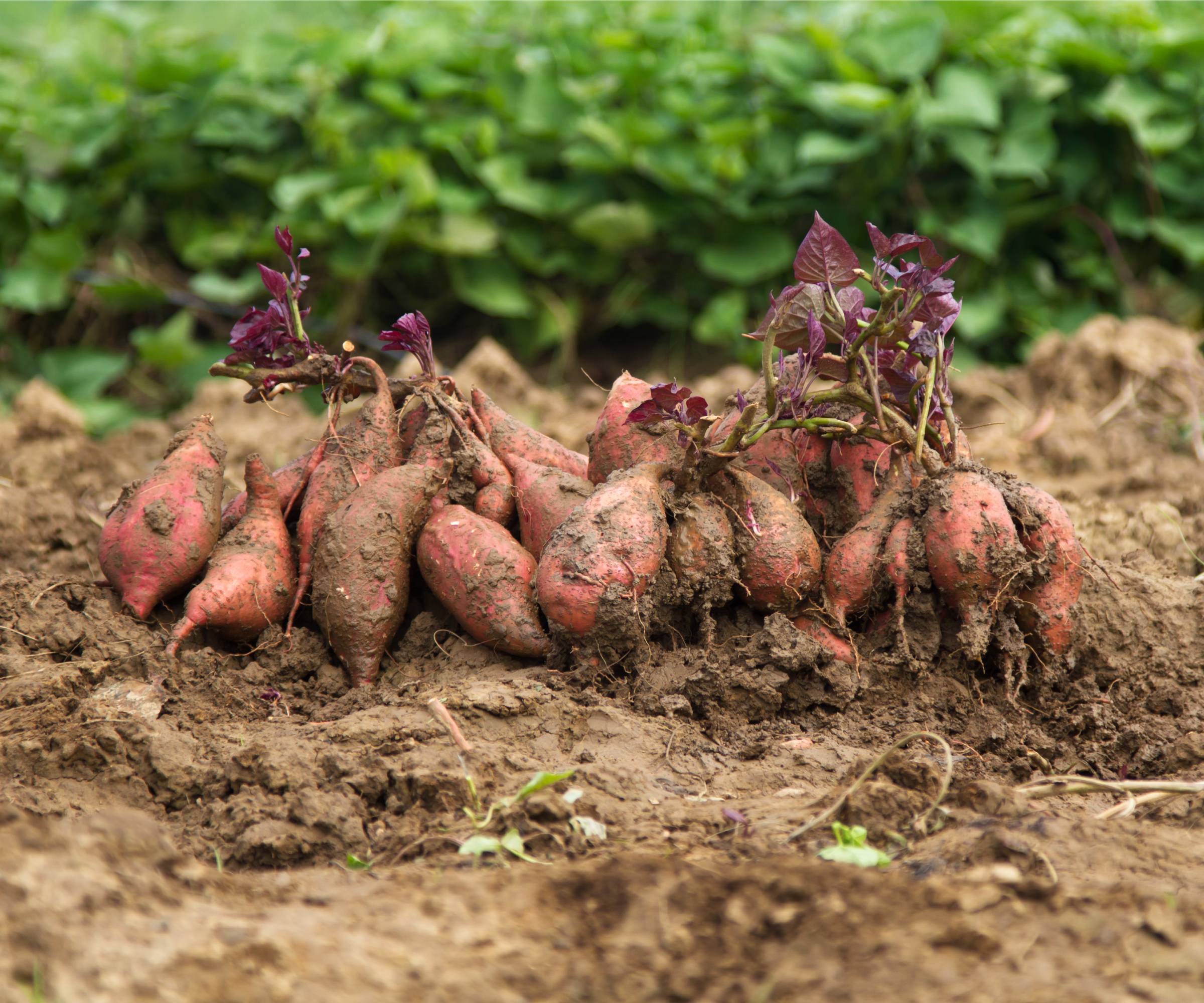
Frequently Asked Questions
What is the best method of planting sweet potatoes?
Plant from slips that are either home grown or purchased from a reputable dealer.
Can you plant sweet potatoes from the grocery store?
If you can get the tuber to grow roots, it can be planted even from a supermarket sweet potato.

Bonnie Grant is a professional landscaper with a Certification in Urban Gardening. She has been gardening and writing for 15 years. A former professional chef, she has a passion for edible landscaping.